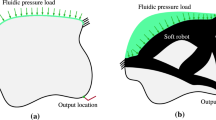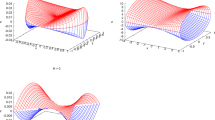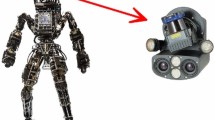Abstract
The problem of maximizing the horizontal coordinate of a point moving in a vertical plane under the action of gravity and dry friction and the corresponding brachistochrone problem are considered. The optimal control problem is reduced to a boundary value problem for a system of two nonlinear differential equations. A qualitative analysis of the trajectories of this system is carried out, their typical features are found and illustrated by numerical solving of the boundary value problem. It is shown that the normal component of the support reaction should be positive when moving along the optimal curve. The optimality of the found extremals is discussed.
Similar content being viewed by others
References
H. J. Sussmann and J. C. Willems, “300 Years of Optimal Control: From the Brachistochrone to the Maximum Principle,” IEEE Control Syst. Mag. 17 (3), 32–44 (1997).
V. N. Mednikov, Flight Dynamics and Aircraft Piloting (VVA Press, Monino, 1976) [in Russian].
V. V. Aleksandrov, L. I. Voronin, Yu. N. Glazkov, A. Yu. Ishlinskii, and V. A. Sadovnichii, Mathematical Problems in the Dynamic Simulation of Aerospace Flights (Mosk. Gos. Univ., Moscow, 1995) [in Russian].
Yu. F. Golubev, “Brachistochrone with Friction,” Izv. Akad. Nauk, Teoriya Sist. Upravlen., No. 5, 41–52 (2010) [J. Comput. Syst. Sci. Int. 49 (5), 719–730 (2010)].
C. M. Wensrich, “Evolutionary Solutions to the Brachistochrone Problem with Coulomb Friction,” Mech. Res. Communs. 31 (2), 151–159 (2004).
N. Ashby, W. E. Brittin, W. F. Love, and W. Wyss, “Brachistochrone with Coulomb Friction,” Amer. J. Phys. 43 (10), 902–905 (1975).
S. C. Lipp, “Brachistochrone with Coulomb Friction,” SIAM J. Control Optim. 35 (2), 562–584 (1997).
S. Salinic, A. Obradovich, Z. Mitrovic, and S. Rusov, “Brachistochrone with Limited Reaction of Constraint in an Arbitrary Force Field,” Nonlinear Dyn. 69 (1), 211–222 (2012).
O. Yu. Cherkasov and A. V. Zarodnyuk, “Brachistochrone Problem with Coulomb Friction and Viscous Drag: Qualitative Analysis,” in Proc. 1st IFAC Conf. on Modelling, Identification and Control of Nonlinear Systems (MICNON 2015). St. Petersburg, June 24–26, 2015 (ITMO Univ., St. Petersburg, 2015), pp. 1028–1033.
A. V. Zarodnyuk and O. Yu. Cherkasov, “Brachistochrone with Linear Viscous Friction,” Vestn. Mosk. Univ., Ser. 1: Mat. Mekh., No. 3, 65–69 (2015) [Moscow Univ. Mech. Bull. 70 (3), 70–74 (2015)].
L. S. Pontryagin, V. G. Boltyanskii, R. V. Gamkrelidze, and E. F. Mishchenko, The Mathematical Theory of Optimal Processes (Nauka, Moscow, 1983; Wiley, New York, 1962).
H. L. Kelley, R. E. Kopp, and H. G. Moyer, “Singular Extremal,” in Topics in Optimization (Academic, New York, 1967), pp. 63–101.
Author information
Authors and Affiliations
Corresponding author
Additional information
Original Russian Text © A.V. Zarodnyuk, O.Yu. Cherkasov, 2016, published in Vestnik Moskovskogo Universiteta, Matematika. Mekhanika, 2016, Vol. 71, No. 4, pp. 54–59.
About this article
Cite this article
Zarodnyuk, A.V., Cherkasov, O.Y. A qualitative analysis of the brachistochrone problem with dry friction and maximizing the horizontal range. Moscow Univ. Mech. Bull. 71, 93–97 (2016). https://doi.org/10.3103/S002713301604004X
Received:
Accepted:
Published:
Issue Date:
DOI: https://doi.org/10.3103/S002713301604004X




